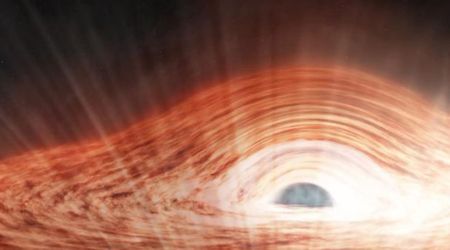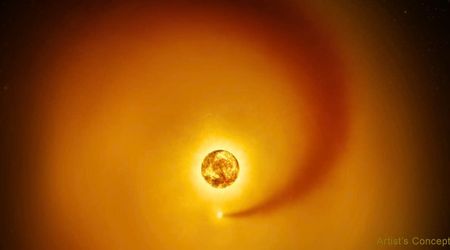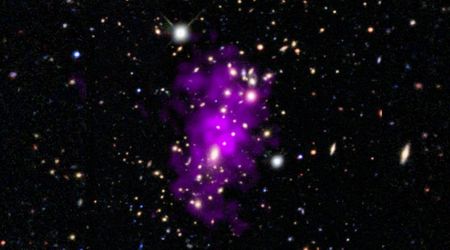Super-dark Vantablack paint could help combat the growing satellite light pollution crisis

Astronomical research, hindered by light pollution from recent low-Earth-orbit satellite megaconstellations, may find an affordable remedy in a new type of highly resistant, super-black satellite paint called Vantablack 310. Among these, the internet-beaming Starlink constellation has been a point of contention since its initial launch in 2019. Thousands of Starlink's spacecraft orbit the Earth at such low altitudes that the sunlight they reflect appears brighter than many natural stars from our vantage point on Earth. While these "Starlink satellite trains" might be an exciting sight for some skywatchers, they pose a significant challenge and are considered a true nightmare for astronomers worldwide, per Space.com.

This costly issue is projected to worsen as the number of satellites in orbit is expected to multiply by tens of thousands over the next few years. For instance, when the $1.9 billion Vera Rubin Observatory begins its operations later this month, astronomers anticipate that as much as 40% of its images will be compromised or entirely ruined by satellite streaks. However, Vantablack 310, developed in collaboration with astronomers, offers a potential solution, per the University of Surrey. This innovative coating could lower the light reflected by satellites in orbit to a mere 2% of what uncoated satellites reflect, effectively eliminating the annoying streaks from telescope images.

Astrophysicist Noelia Noël of the University of Surrey is deeply concerned that the streaks left by satellites will significantly diminish the scientific value of the taxpayer-funded Vera Rubin telescopes. Noël, who is slated to participate in Runin's decade-long mission to map the sky, has long been troubled by the increasing loss of pristine dark skies due to artificial light. Driven by her lifelong fascination with the night sky and a growing concern over its degradation, Noël has teamed up with Surrey NanoSystems, a University of Surrey spin-off. This collaboration has resulted in a groundbreaking "blacker-than-black" space paint.

Surrey NanoSystems, known for its ultra-black coatings used on scientific satellite instruments, applied its expertise to create a paint that reflects less light than any other option currently available. This innovative product can be easily applied by satellite manufacturers in their clean rooms. Noël emphasized the urgency of this development, telling Space.com, "Over the past five years, humankind has launched more satellites into space than it has done over the previous 60 years." She highlighted the detrimental impact of this on astronomy, citing, "It's a real problem for astronomy, especially for telescopes like Vera Rubin, which had to significantly change its observing strategy to avoid satellite clusters. So, I wanted to do something about it."
Surrey NanoSystems' earlier Vantablack coatings, while incredibly effective at absorbing light (their Vantablack High Performance flagship product absorbed 99.9% of sunlight), were difficult to apply due to their delicate nanotechnology. These coatings, based on a carbon nanotube structure, were so fragile that even the most delicate human touch would compromise their anti-reflective properties. As Kieran Clifford, a materials scientist at Surrey NanoSystems, explained, "The previous coating was based on a carbon nanotube structure that can't be touched because it would collapse. We needed something that could be easily handled by engineers at their own facilities."
The new coating, however, is established on a combination of carbon black — a soot-like form of carbon — and special binders, making it resistant to severe conditions in space. Moreover, given its better results, the company is talking with satellite manufacturers to move things forward. "I don't want to be too optimistic, but I hope that with this new solution, we might be able to inspire some policy changes," Noël added. "Satellites are an amazing technology, but we also want to make sure that the sky remains accessible to everyone. Large telescopes represent a huge investment, and we want to make sure that it doesn't go to waste."









